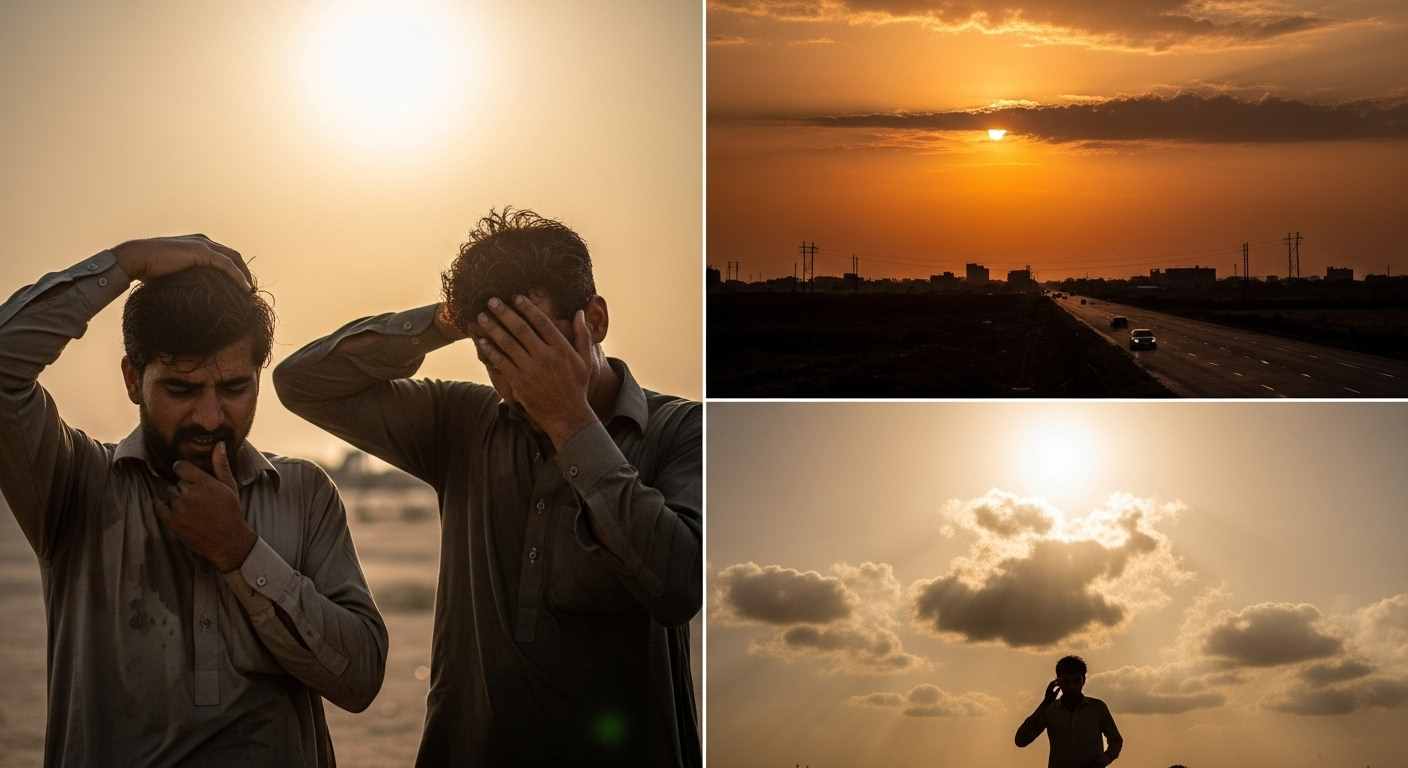Rising Heatwave in Pakistan: Climate Change, Energy Crisis, and Public Distress

Pakistan is currently grappling with an intense heatwave that has not only paralyzed daily life but has also severely impacted public health, the economy, and the energy sector. During the months of June and July, temperatures have soared far beyond normal, reaching nearly 50°C in several cities across the country.
Root Causes of the Escalating Heat
Environmental specialists believe that the main driving force behind the increasing temperatures across Pakistan is the ongoing impact of climate change. The effects of global warming are becoming increasingly evident in South Asia, particularly in Pakistan. Factors such as carbon emissions, deforestation, rapid population growth, and unchecked urbanization have disrupted the natural balance.
Dr. Imran Javed, an expert at the National Climate Change Institute, stated:
In Pakistan, annual temperature levels are rising by approximately 0.8 to 1°C— a rate that far exceeds the global average.if this trend continues, many areas in the country may become uninhabitable within the next decade.”
Worst-Affected Regions
The central and southern regions of Pakistan — including areas like Sindh, southern Punjab, and Balochistan — are presently experiencing some of the harshest heat conditions in the country. Cities such as Jacobabad, Sibi, Rahim Yar Khan, Dadu, and Nawabshah are among the most severely affected, with temperatures soaring to extreme levels recorded temperatures between 49°C and 50°C.People are struggling with breathing difficulties, extreme heat-related illnesses, and an alarming scarcity of clean water.
Heatwaves and Health Hazards
The ongoing heatwave has led to a dangerous increase in heatstroke cases across the country.Public hospitals in major cities including Karachi, Lahore, Multan, and Peshawar have been placed on high alert due to the escalating health risks. Doctors have advised the public to avoid going outdoors unnecessarily, stay hydrated, and protect themselves from direct sunlight.
Energy Crisis and Power Outage
The extreme heat has caused a massive surge in electricity demand, resulting in power outages lasting 10 to 14 hours in many areas. The situation is even worse in rural areas, where power can be unavailable for up to 18 hours. Industrial and office operations have been disrupted, dealing a significant blow to the economy.
According to WAPDA sources, electricity demand has exceeded 30,000 megawatts, while production is limited to around 21,000 megawatts.
Water Shortages and Agricultural Impact
The heatwave has also triggered a severe water crisis, severely affecting agriculture. Rivers are drying up, groundwater levels are declining, and the canal system is under immense strain. Farmers in Sindh and Punjab are facing water shortages, putting crops like cotton, rice, and sugarcane at risk.
Government Apathy and Lack of Preparedness
Public frustration is growing over the government’s lack of response to the heat emergency. There have been no shelter homes established, no deployment of water tankers, and no public awareness campaigns. Experts warn that without an immediate shift in environmental policy, the situation could become even more catastrophic in the coming years.
The Need for Environmental Protection
Experts stress that the following actions are crucial to mitigating the impacts of rising temperatures:
- Launching a nationwide afforestation campaign
- Promoting renewable energy (solar, wind)
- Increasing green spaces and parks in urban areas
- Strict control over industrial emissions and pollutants
- Promoting environmental education and public awareness
Conclusion
The rising heat in Pakistan is not just a seasonal phenomenon—it is a full-blown environmental crisis. It is affecting every aspect of life, from public health and the economy to agriculture and energy. If immediate and effective measures are not taken now, future generations will face unlivable conditions.
